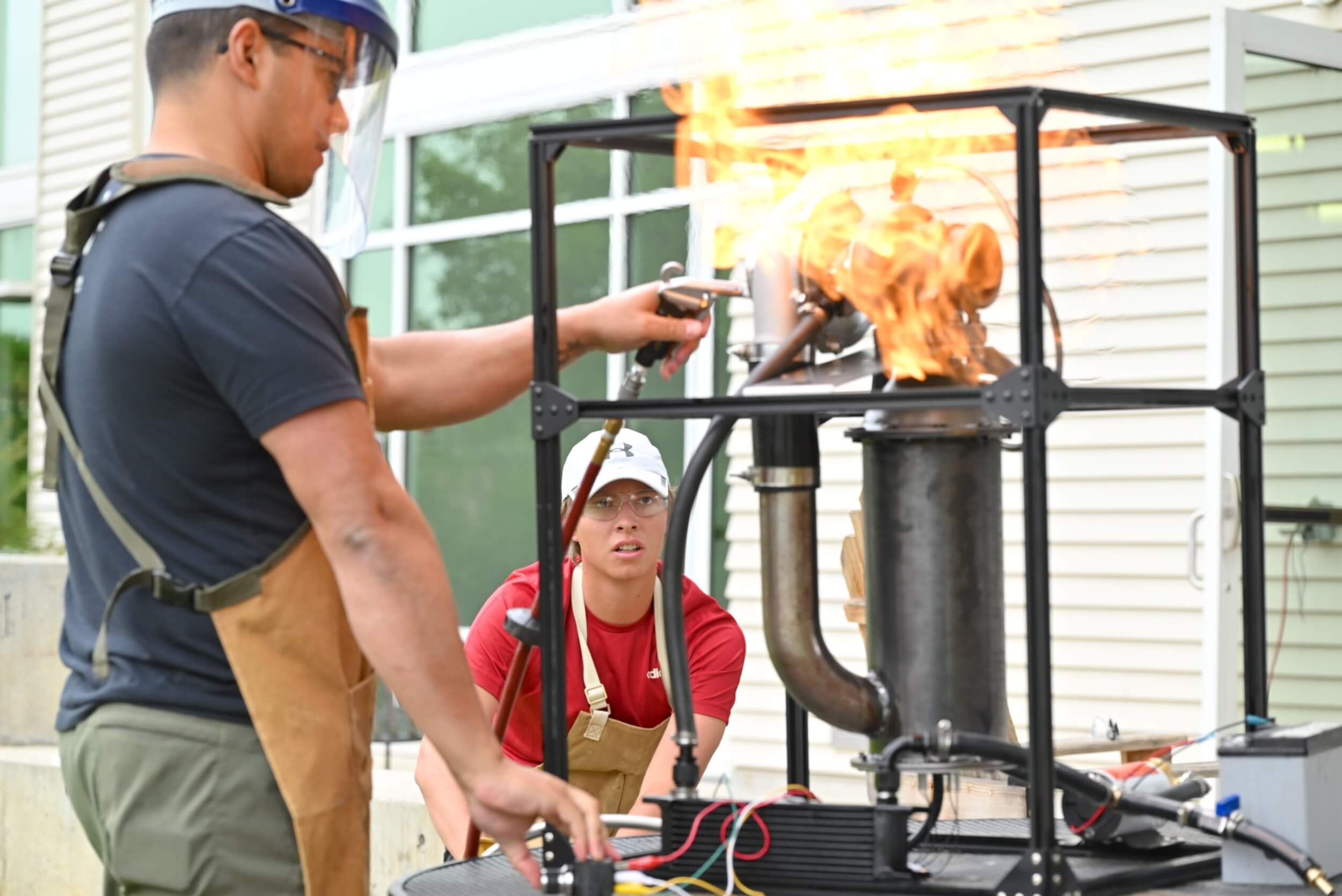Many high school students spend the summer before college road-tripping, volunteering, celebrating with friends one last time, or perhaps even interning or working part-time with the future in mind. Graham Neely ’24 used most of his nearly three-month window—between delivering remarks as elected Senior Class Speaker at Colorado Academy’s Commencement in May 2024 and starting his first year at Brown University in late August—ensconced in and around CA’s Upper School, where he rigorously tested and refined the design of the propane-powered turbine jet engine he started building as an independent project in the school’s Anderson Innovation Lab in the spring.
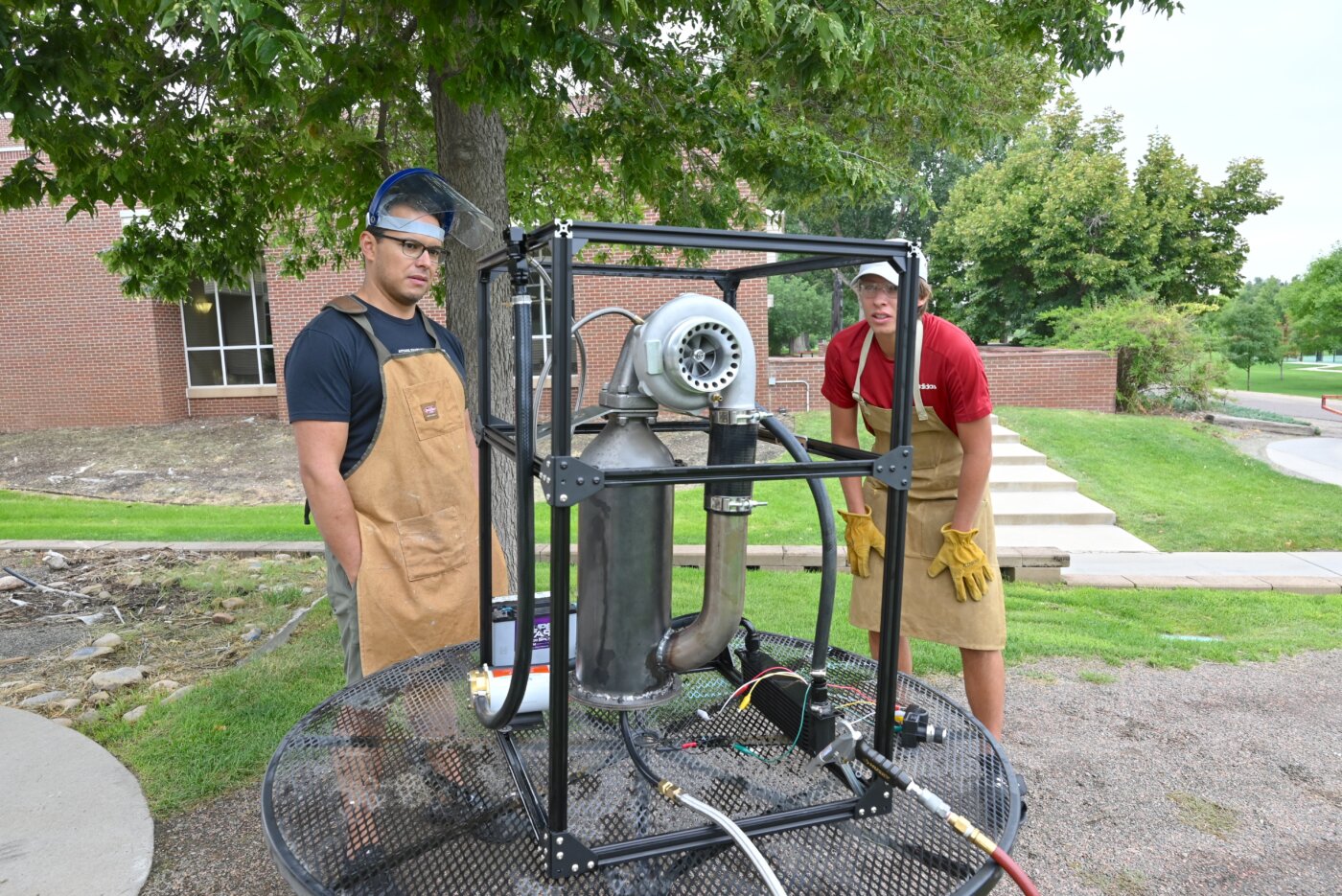
Why did a jet engine seem to Neely like the perfect summer endeavor? Advised on the project by CA engineering and design instructor Dr. Márcio Forléo, Neely had fallen in love with the idea earlier in the year when Forléo suggested it to him in passing. Already leaning strongly toward the engineering or aerospace fields at Brown—he led CA’s Aerospace Club, in addition to participating in Speech and Debate and excelling in AP and post-AP math and science—Neely realized designing and building his own engine would allow him to learn even more about areas he was interested in, such as 3D-printed metal, computer-aided design (CAD), welding, high-performance cooling systems, and the physics of propulsion.
“I just became really dedicated to seeing the project through to the end,” Neely recounts.
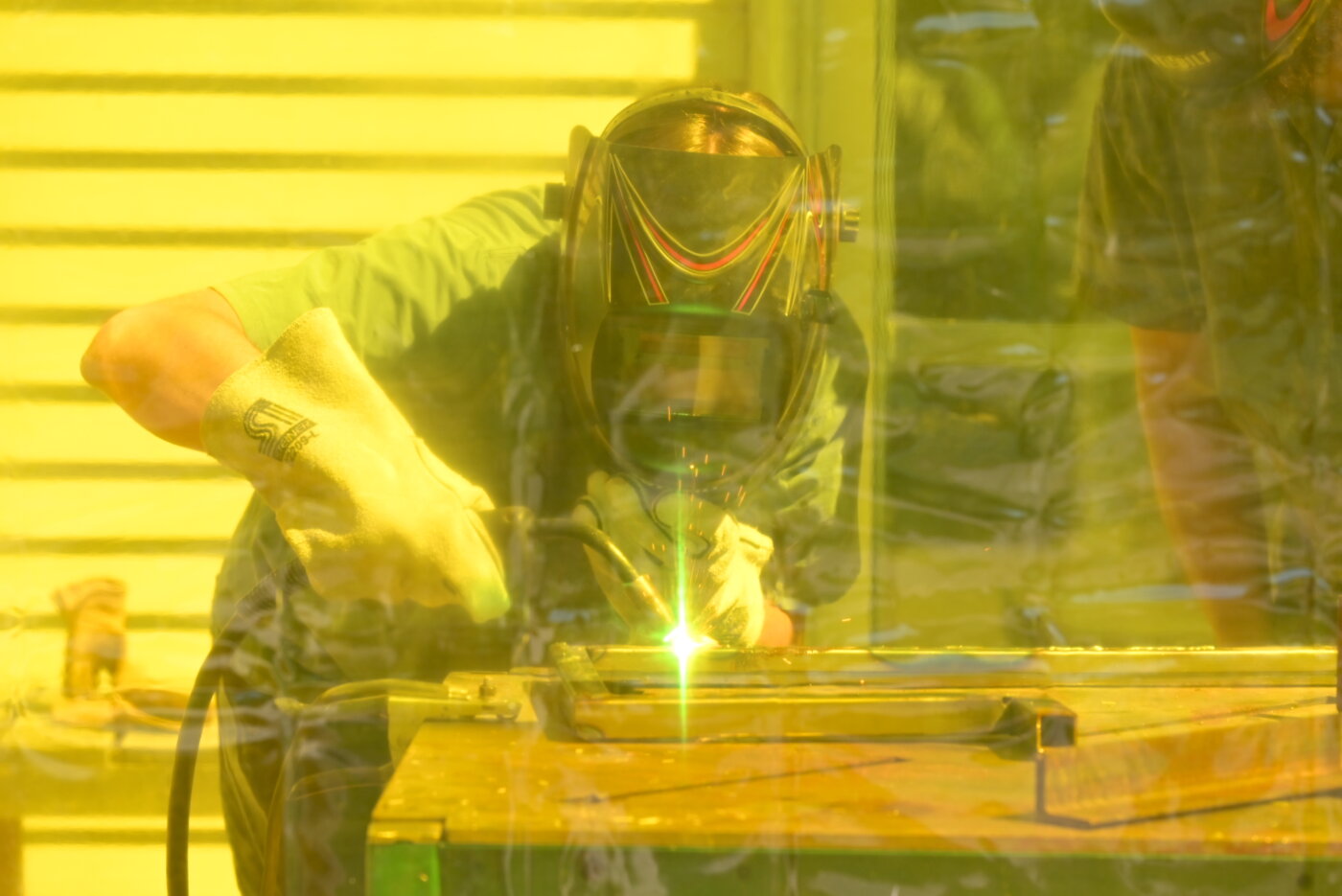
He and Forléo began their work with only a vision and bits and pieces of expertise they were eager to expand. They knew every gas turbine jet engine works in basically the same way: by compressing air, mixing it with fuel, igniting the mixture, and ejecting the air behind the engine, creating a force known as thrust. But rather than purchasing an off-the-shelf engine kit, the two CA engineers pursued a mostly ground-up build that would eventually incorporate a custom-designed, 3D-printed combustion chamber made of stainless steel, an automotive turbocharger (a shortcut around having to acquire a real jet-engine compressor), battery-powered igniters from a backyard grill, a miniature oil-circulating cooling system, a high-temperature steel turbine and exhaust nozzle, and a standard tank of liquid propane from the supermarket.

With a BS and MS in Biomedical Engineering from Mercer University in Macon, Ga., and his PhD in Bioengineering from Colorado State University, Forléo was able to advise Neely about techniques and theories as well as crucial parts, fittings, and other hardware they needed, but throughout the course of the spring and summer, he and the CA Senior learned through research and a great deal of trial and error what it would take to see their vision take flight.
Armed with a rough plan and plenty of online documentation, Neely and Forléo had to answer numerous essential questions. How would they direct high-speed airflow—critical to sustaining the propulsion-generating cycle—into their engine, which was mounted to a stationary support structure? They used compressed air piped in from the Innovation Lab. To keep the automotive turbocharger from overheating at high RPMs, they employed an oil cooling loop circulating directly into the turbo’s bearings. And they had to design a way to link the turbocharger’s fan—the intake side of the engine—to the turbine—the output side, which simultaneously ejects superheated air and returns energy to the spinning fan in a self-perpetuating cycle.
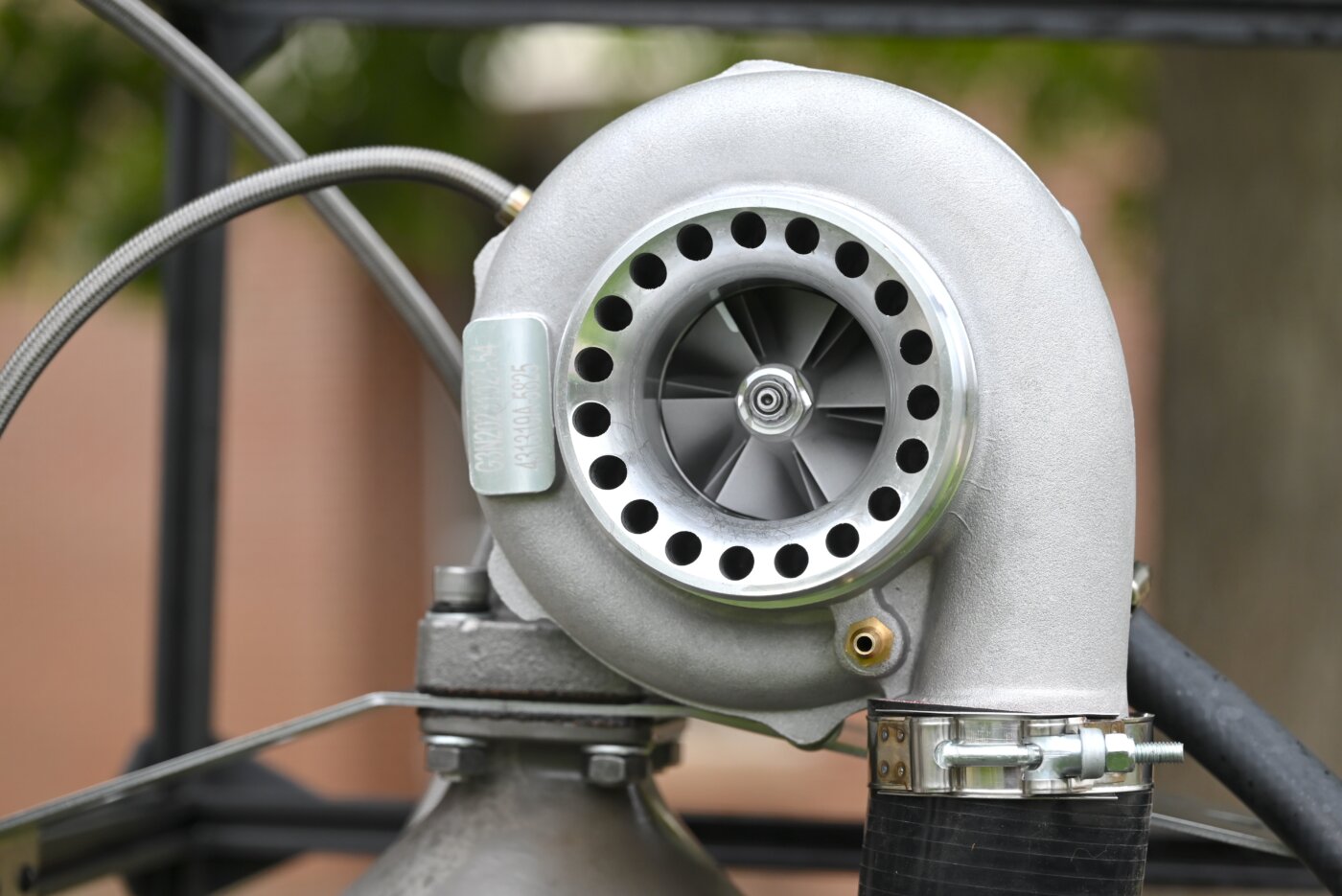
But the biggest challenge they had to work out was arranging the normally straight-line components of the typical jet engine into a modular structure that could accommodate their clever and cost-saving turbocharger, which curves like a nautilus shell. Forléo is justifiably proud of the novel solution Neely designed. Using one of CA’s CAD workstations, the student precisely engineered a cylindrical chamber that could seamlessly route the compressed air from the turbo downward through a flame tube and then back up to the turbine. Ensuring that every bolt hole, intake, and output lined up perfectly on the computer, Neely and Forléo were then able to send a digital file to a fabricator to have their one-of-a-kind part 3D printed out of stainless steel.
“By designing our own component,” explains Neely, “we were able to make it super-strong and perfectly matched in every dimension with all of our other hardware.”
By August, Neely and Forléo were down to the fine tuning, experimenting with their propane-to-air mixture to generate the ideal amount of flaming thrust without burning up their components. While Neely had to man the propane tank’s supply knob for every summer test, eventually, according to Forléo, “We’ll add more controls and gauges so it’s not such a ‘MacGyver’ solution.”
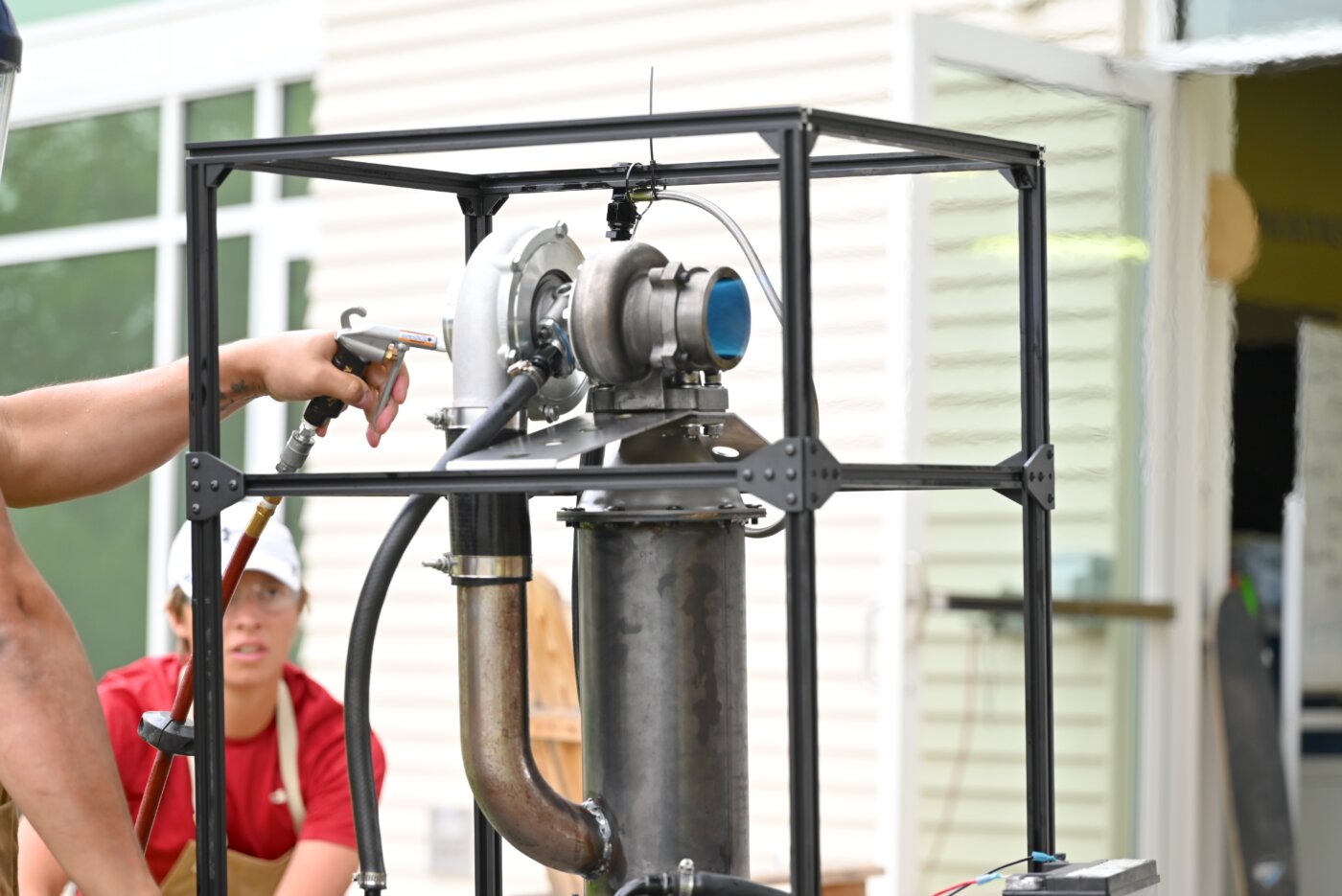
But with Neely heading to Brown in August, further refinement had to wait—which was all part of the plan, say the engineers. The engine will become a resident of CA’s Anderson Innovation Lab, offering a testbed for future students who want to keep learning about and working on the project. An air-intake cone, casters for mobility, and even a way to improve and measure thrust (currently at about 20 horsepower) are all on the to-do list—as is an engraved nameplate, Forléo adds. “It will say, ‘Started by Graham, continued by…’ Everyone will contribute a little something each year.”

Neely, in his Commencement address before his classmates, family members, and teachers, said that when he arrived as a new CA student in Ninth Grade, he “immediately understood that this was a place that wasn’t just supportive, but a place where your fellow students actively cheer you on, rooting for your successes and commiserating with your failures. An environment where we could all forge our own paths, try new things, and learn about ourselves and from each other.”
And where even future students could learn from those who came before, Neely could have added.
“To go to school every day in such an atmosphere is, unquestionably, a great gift.”
